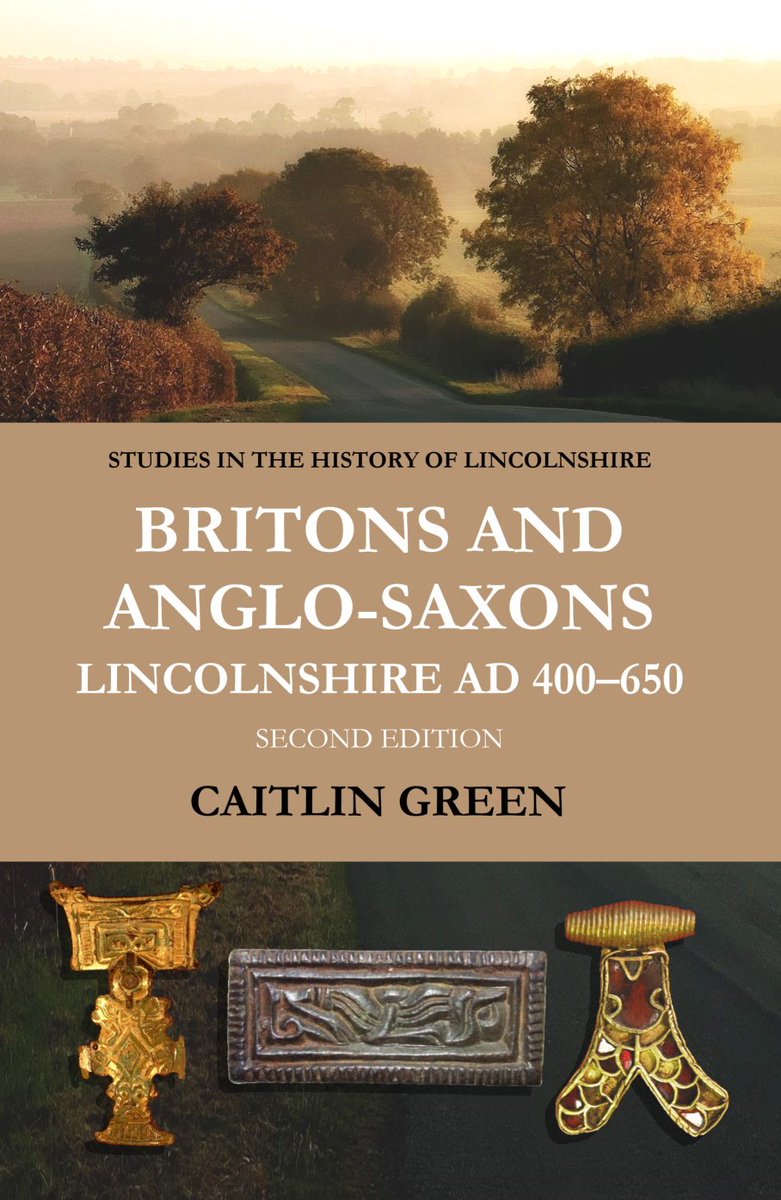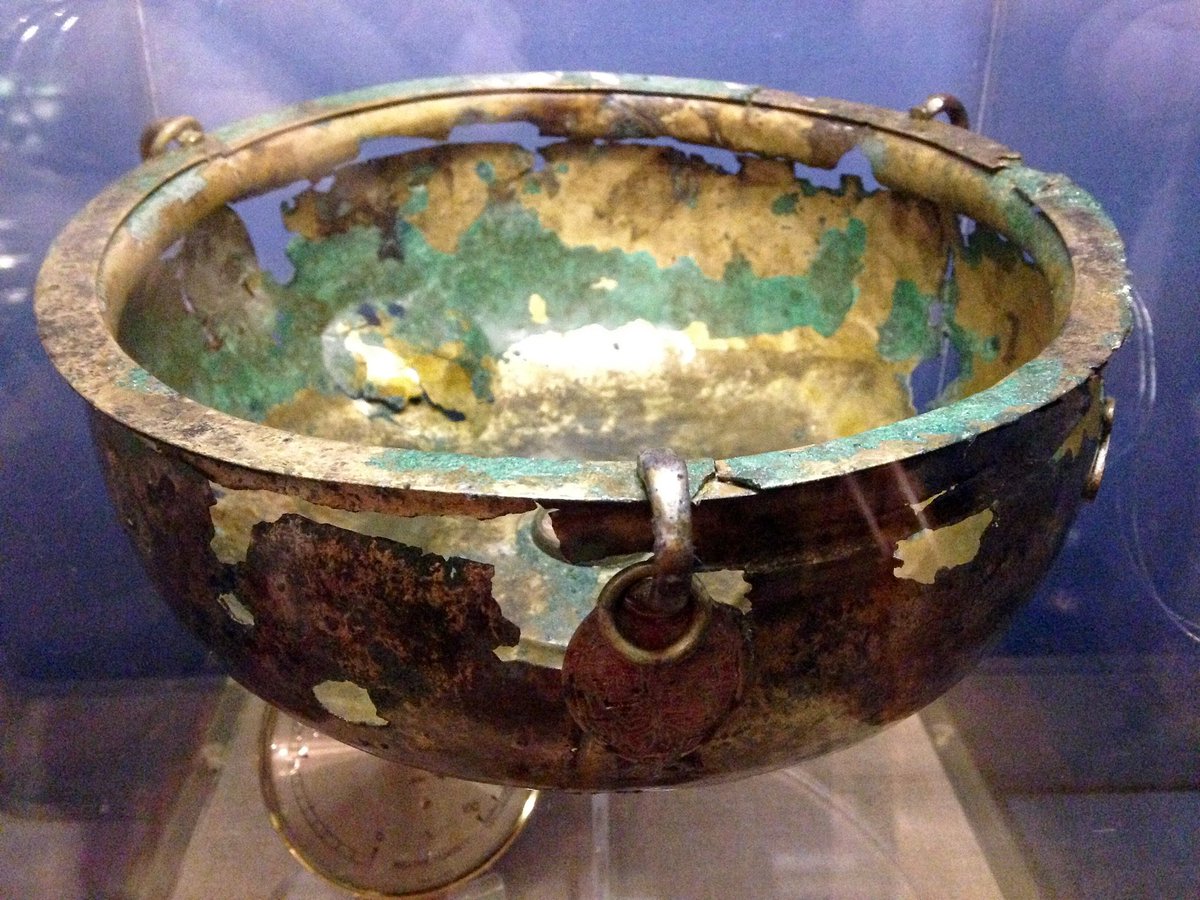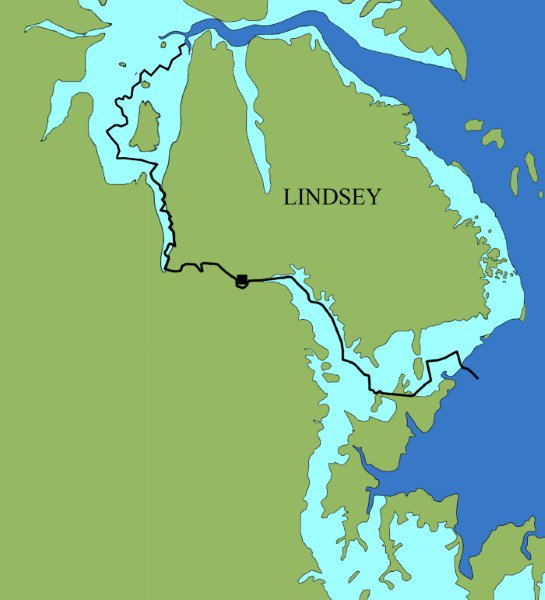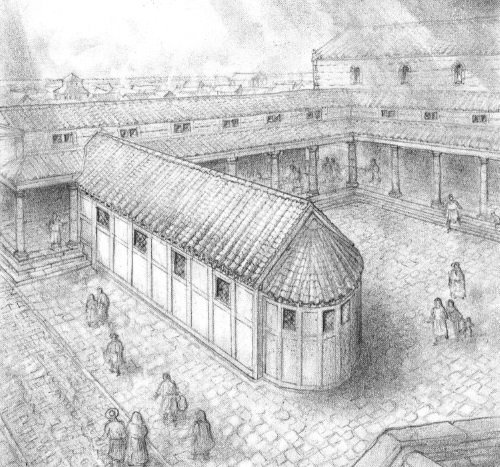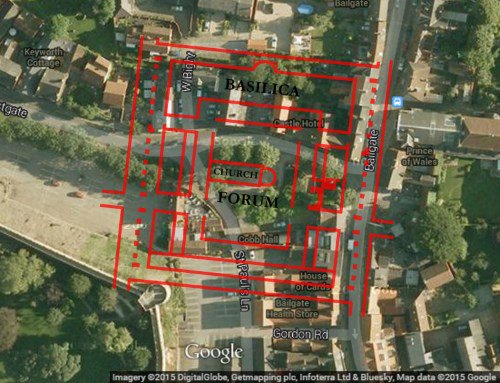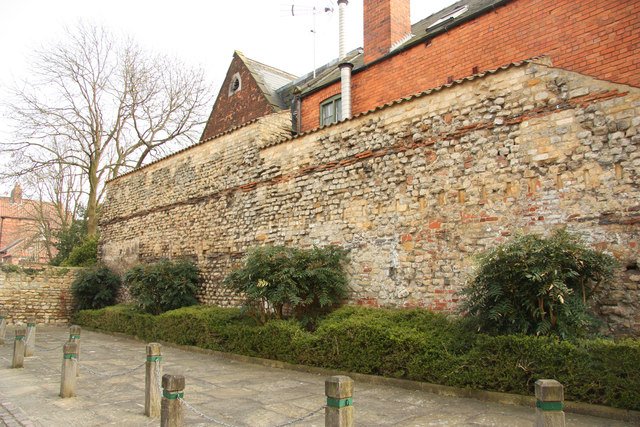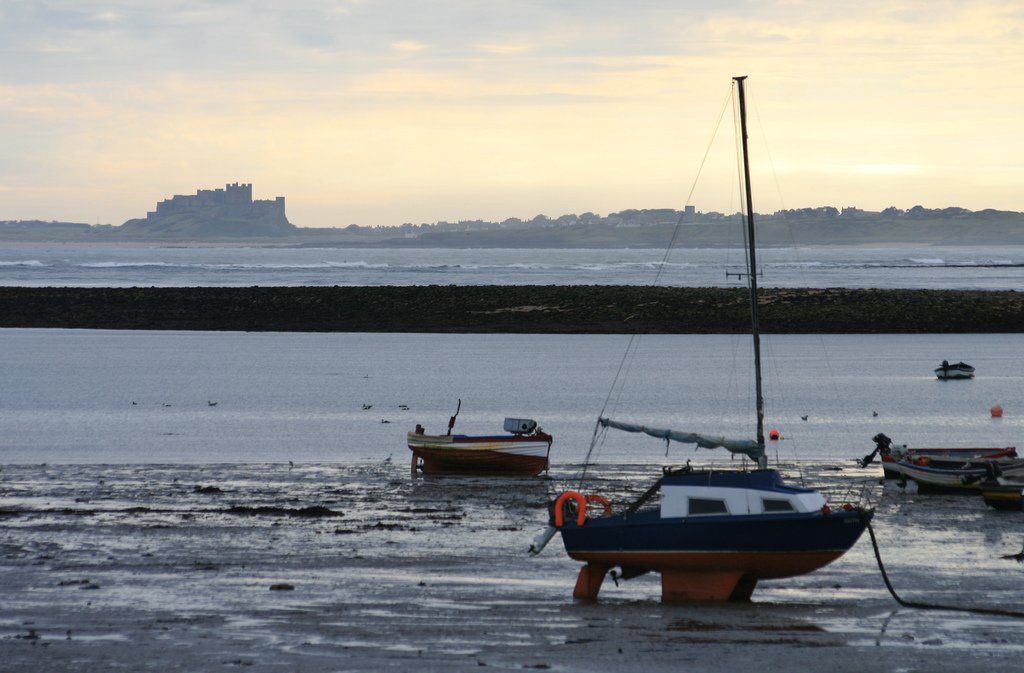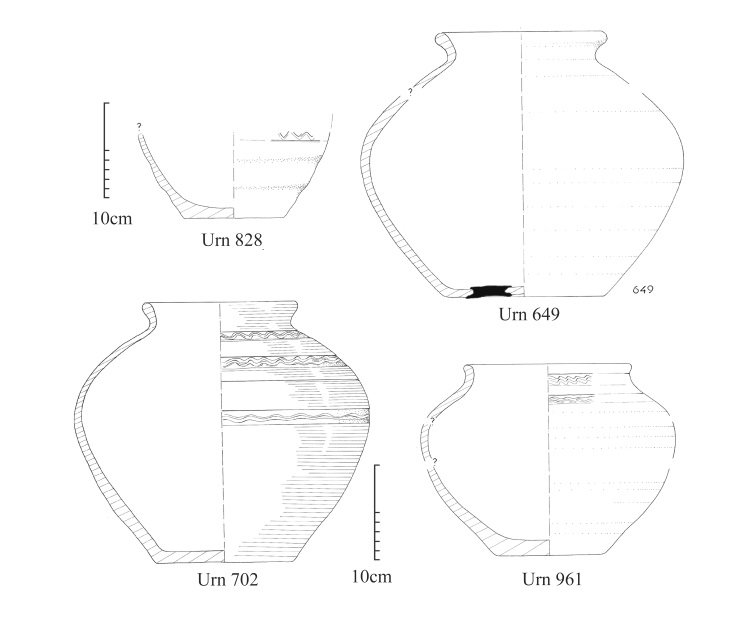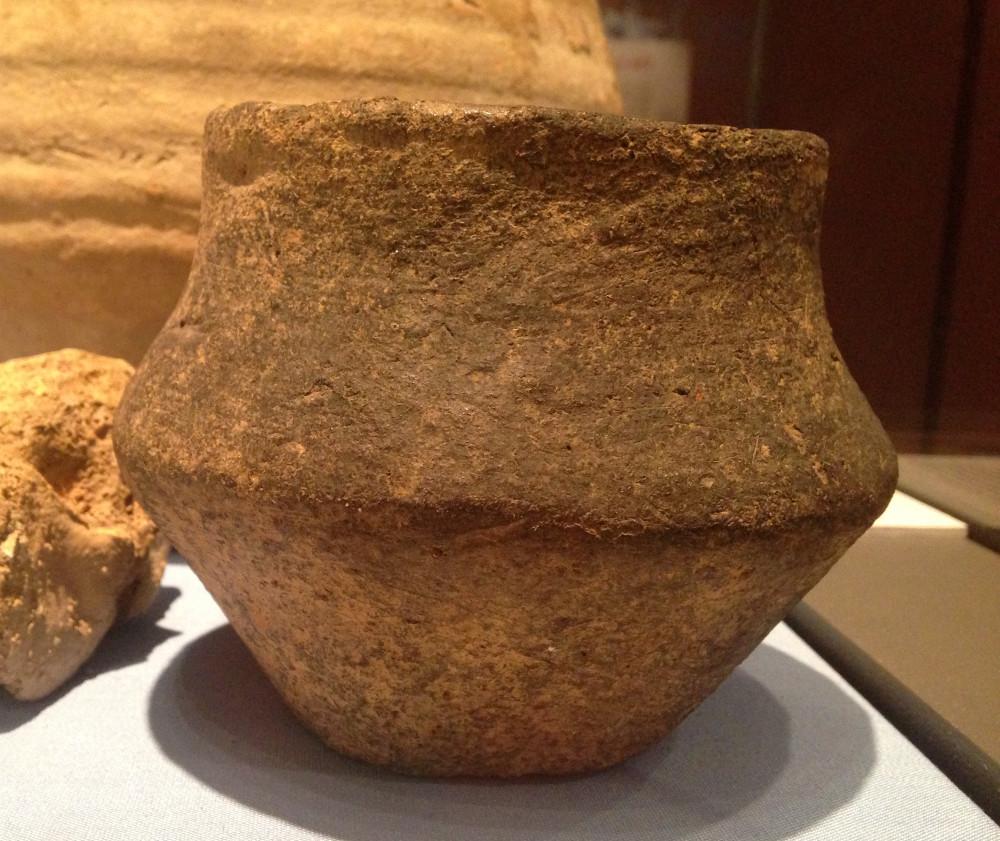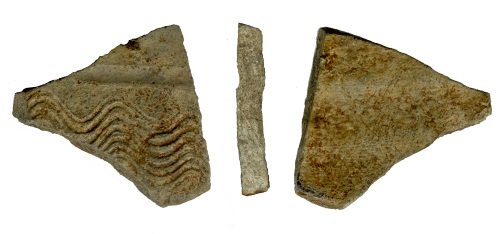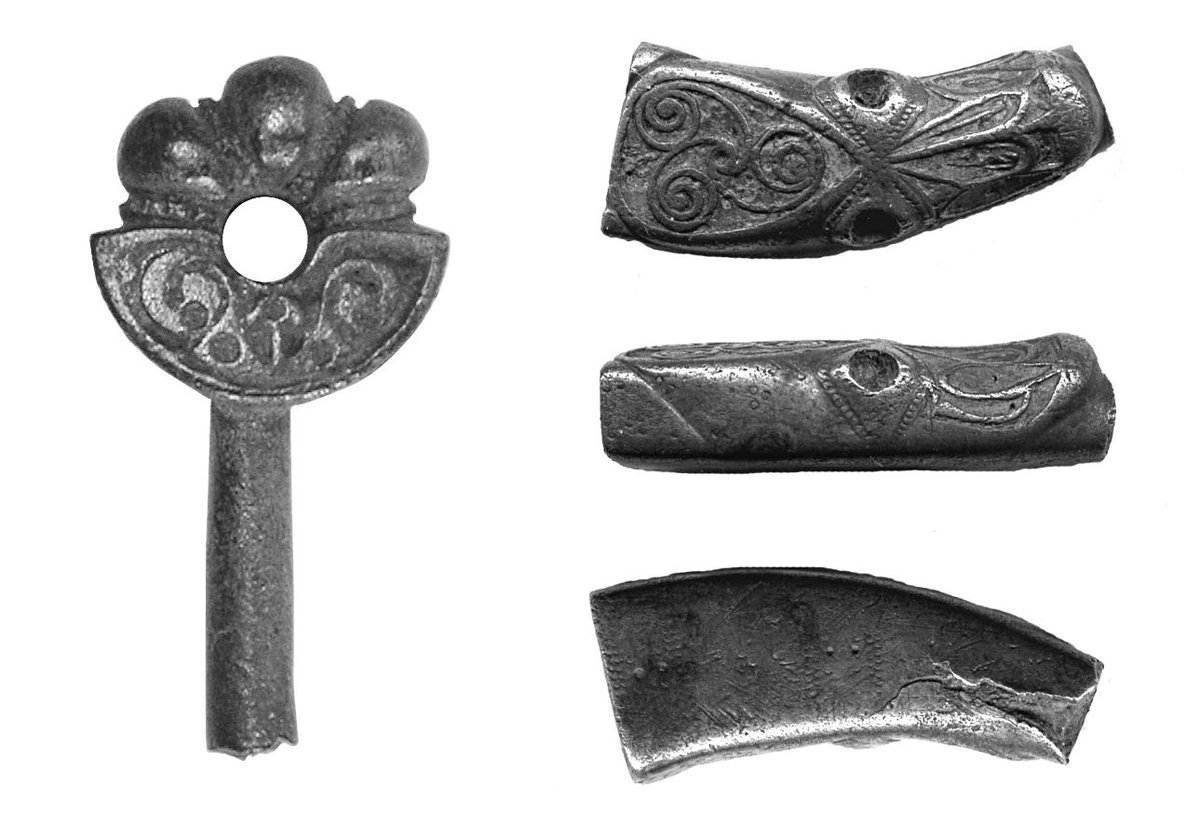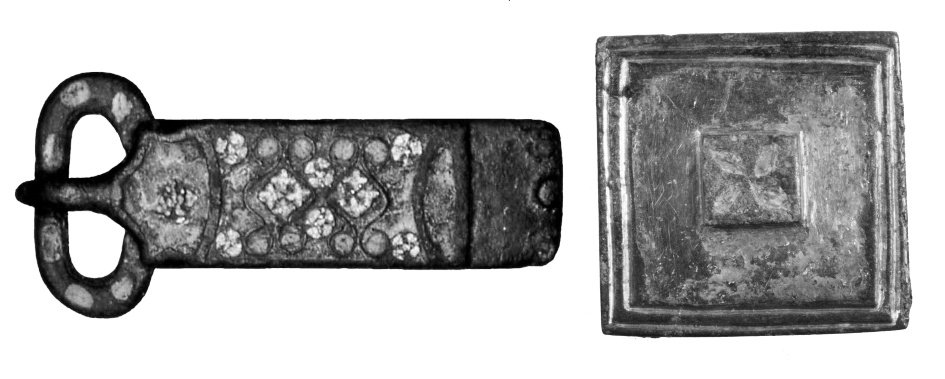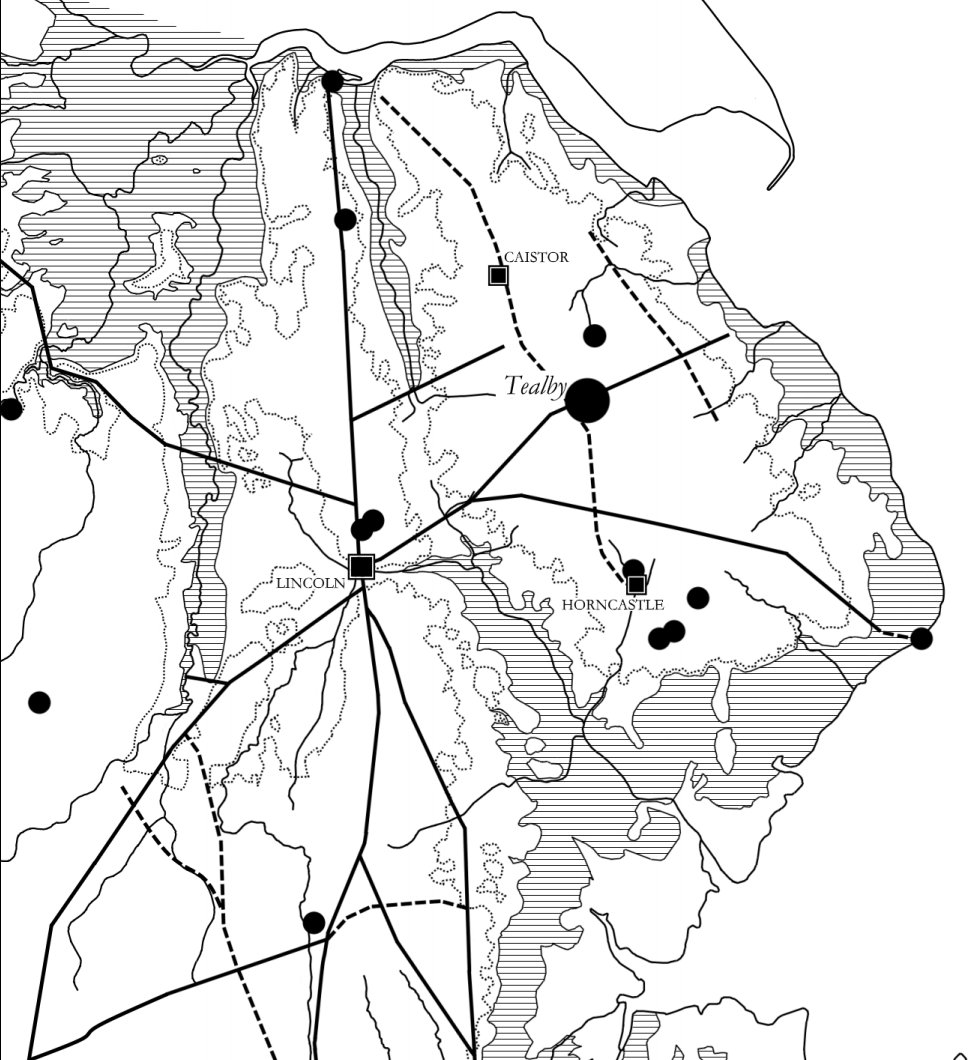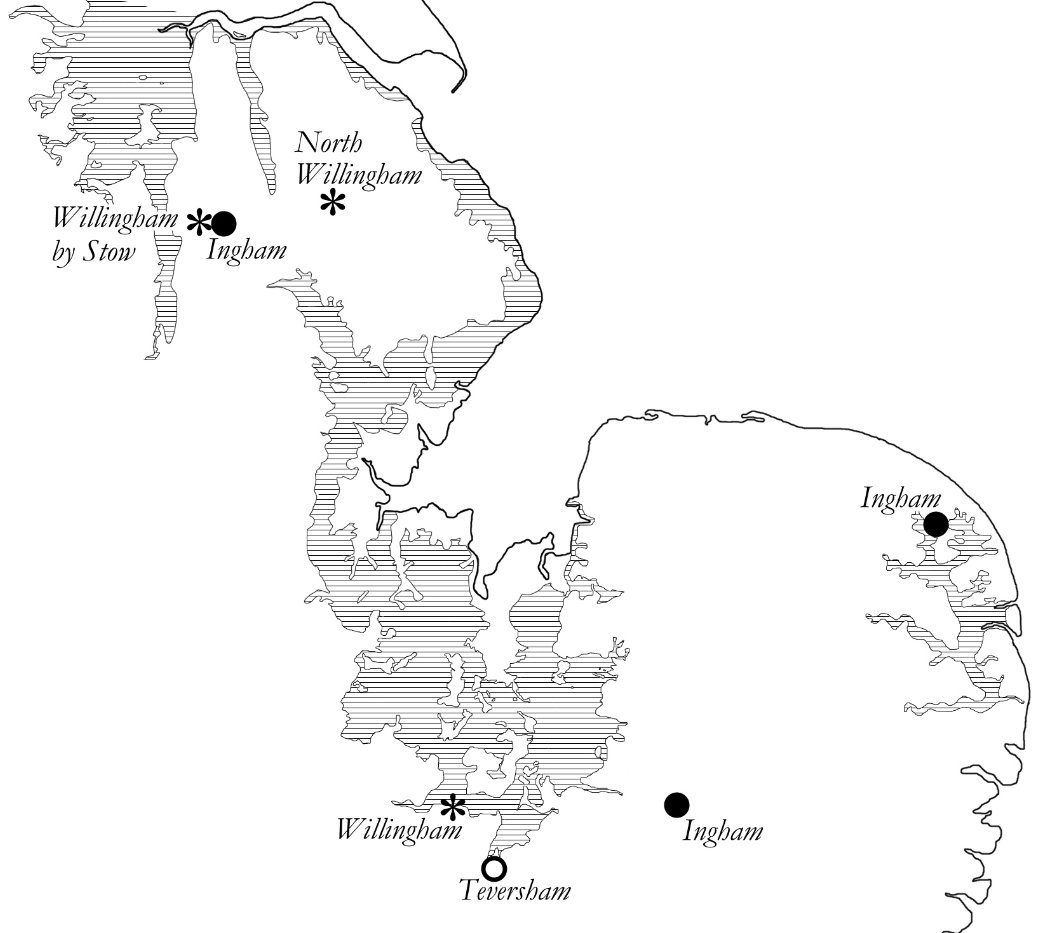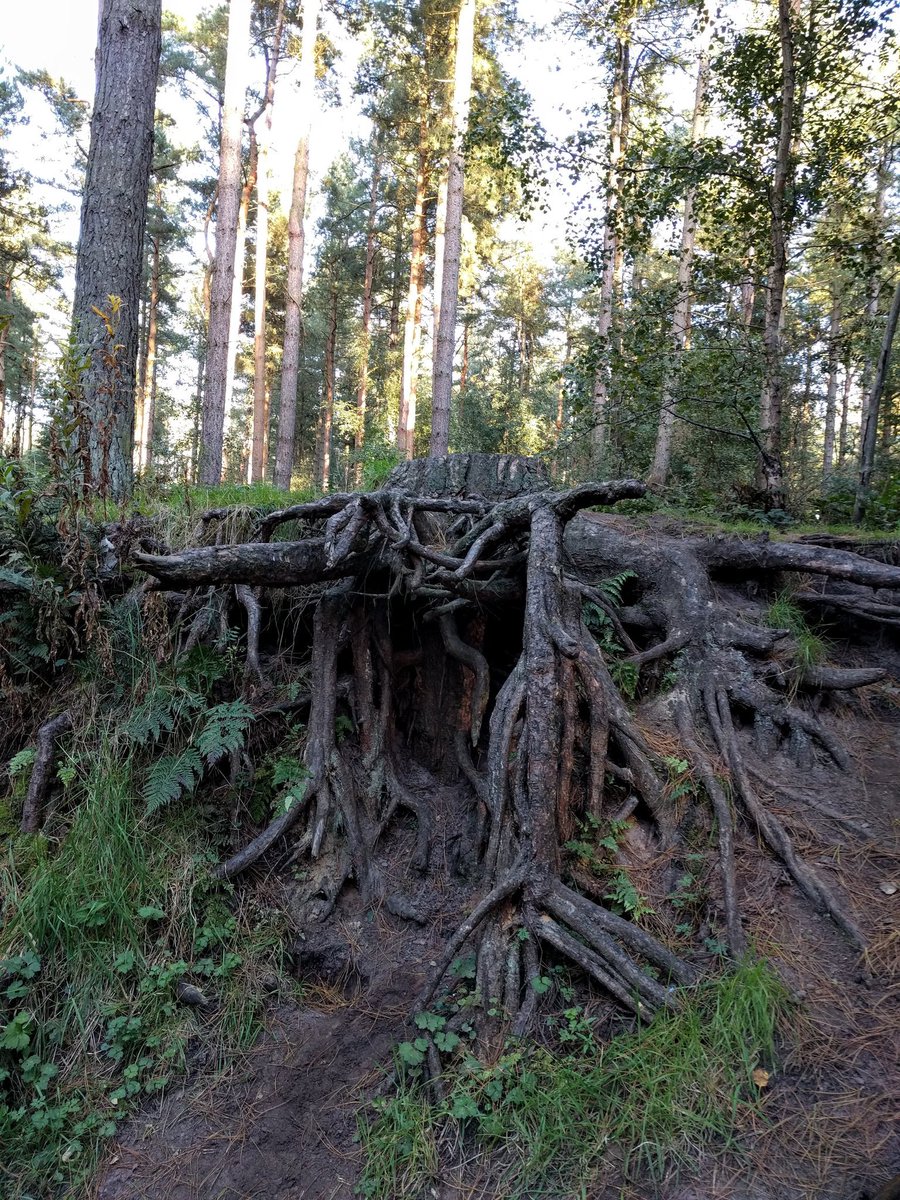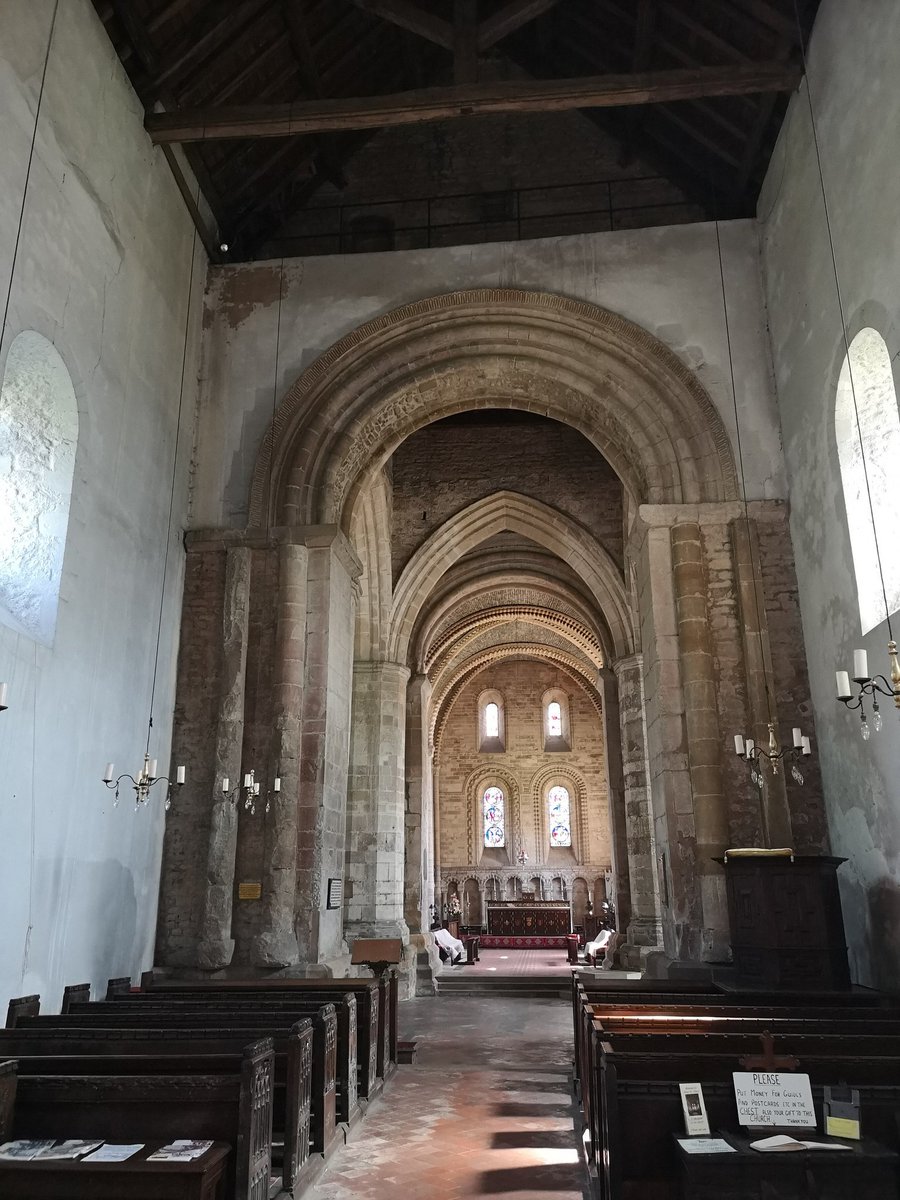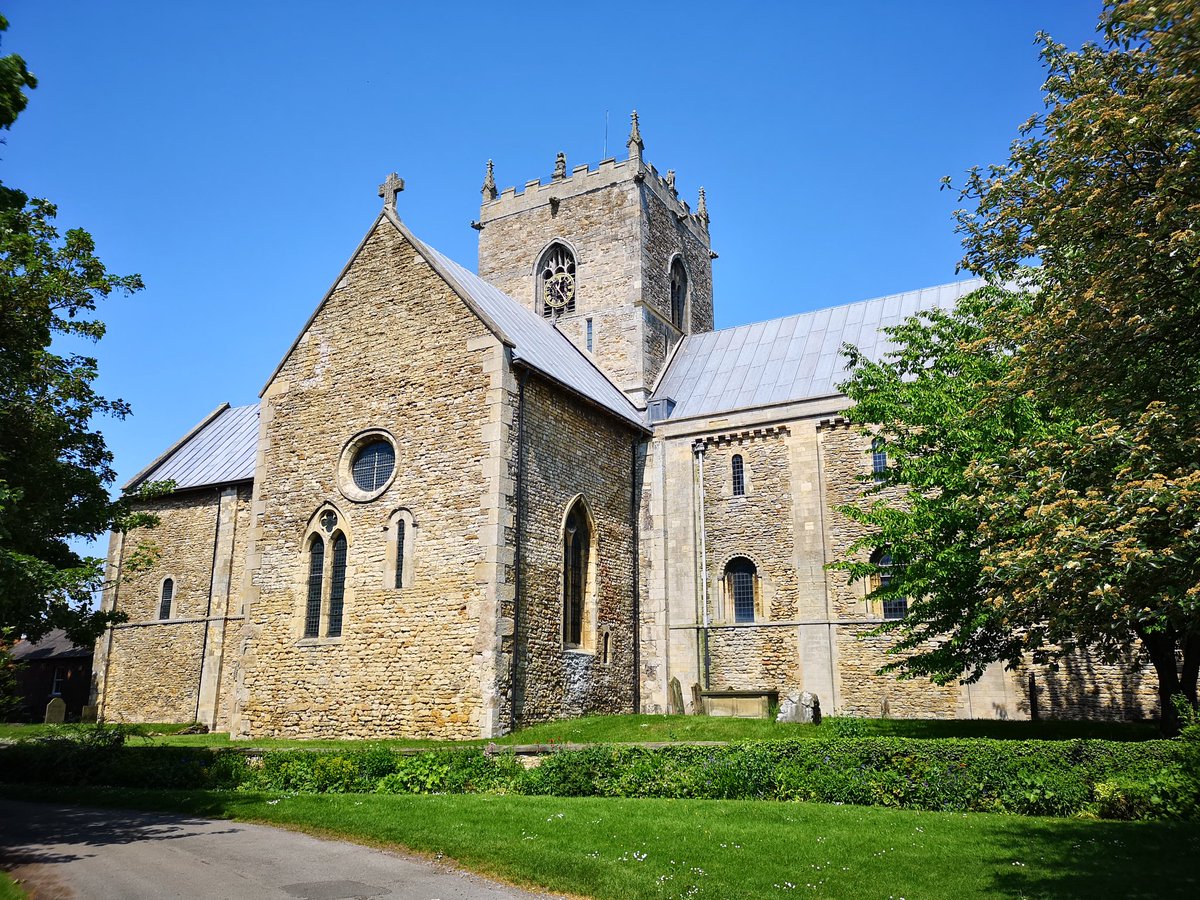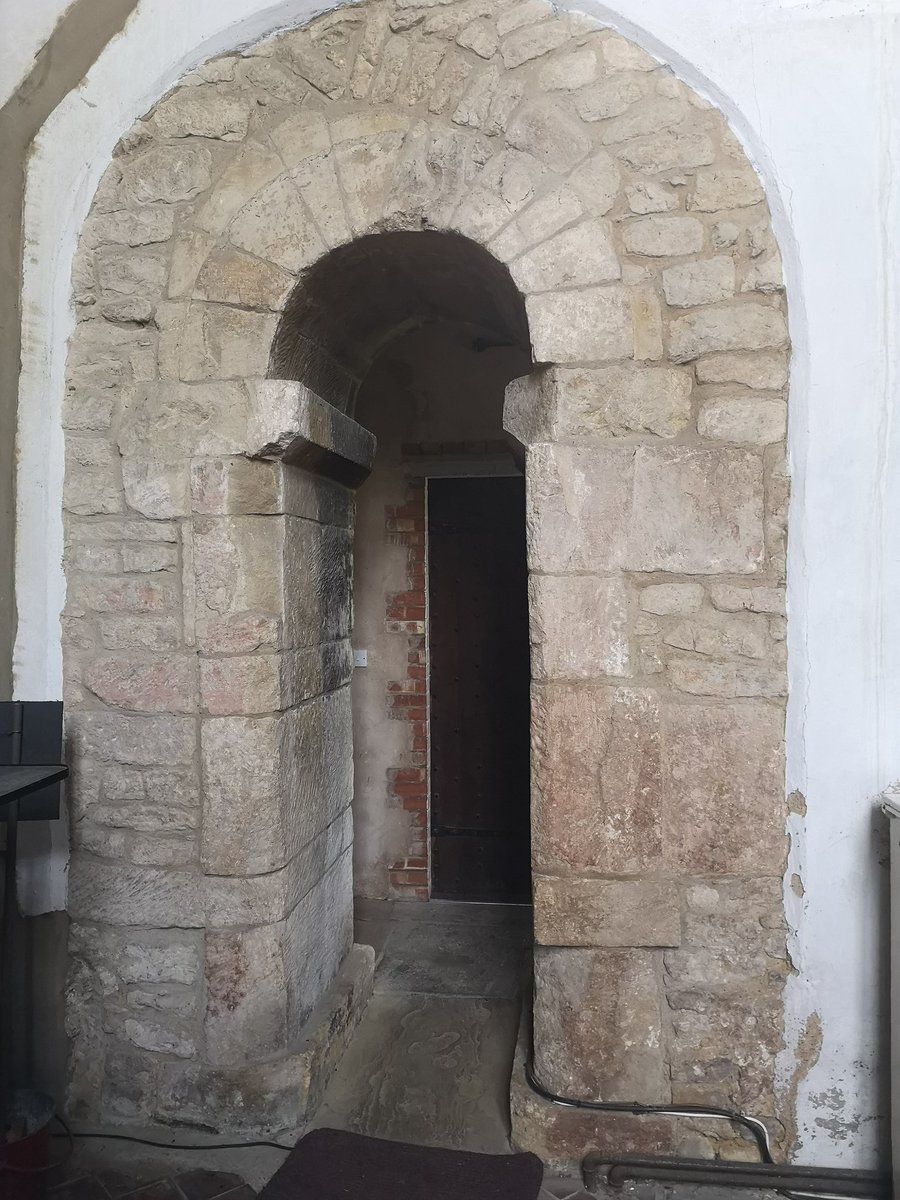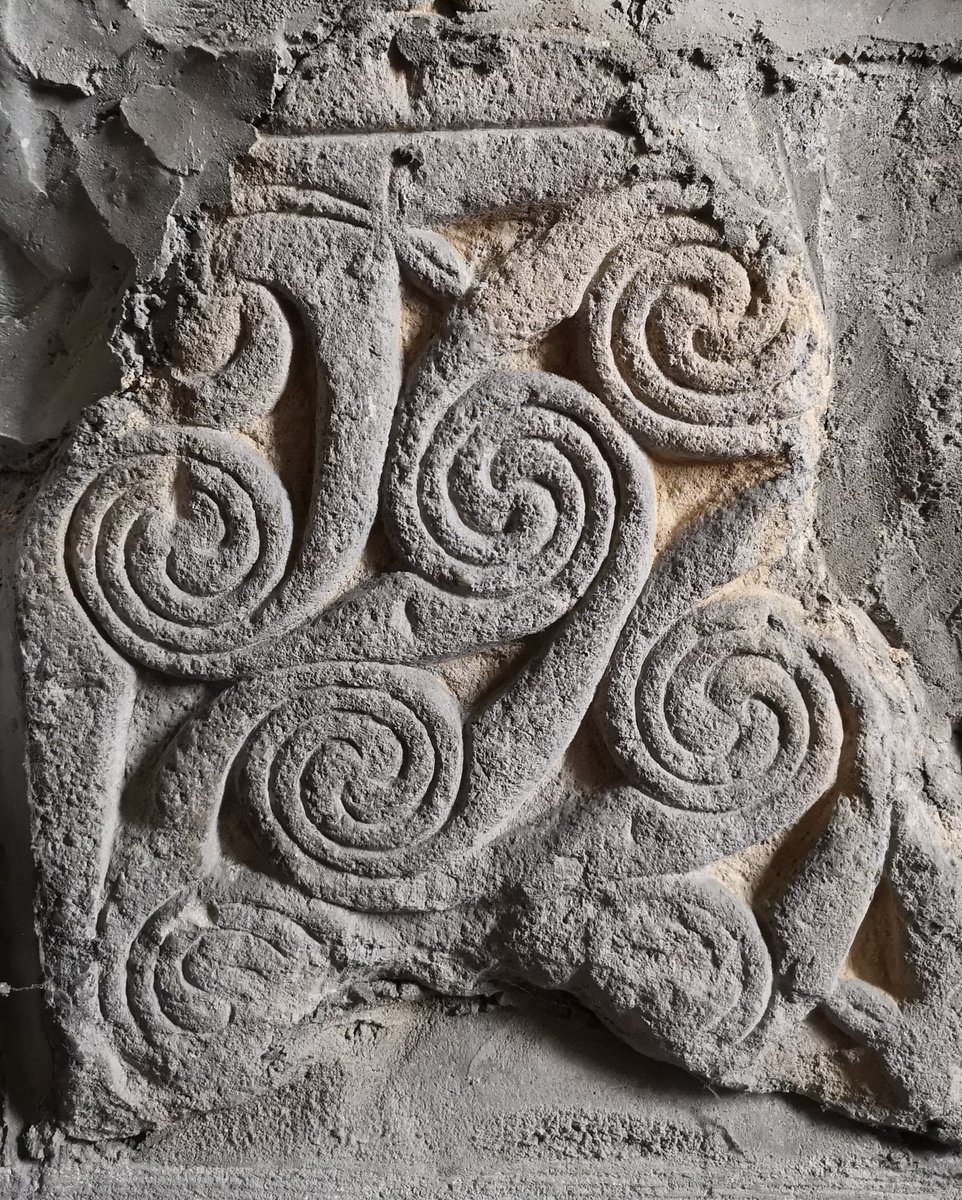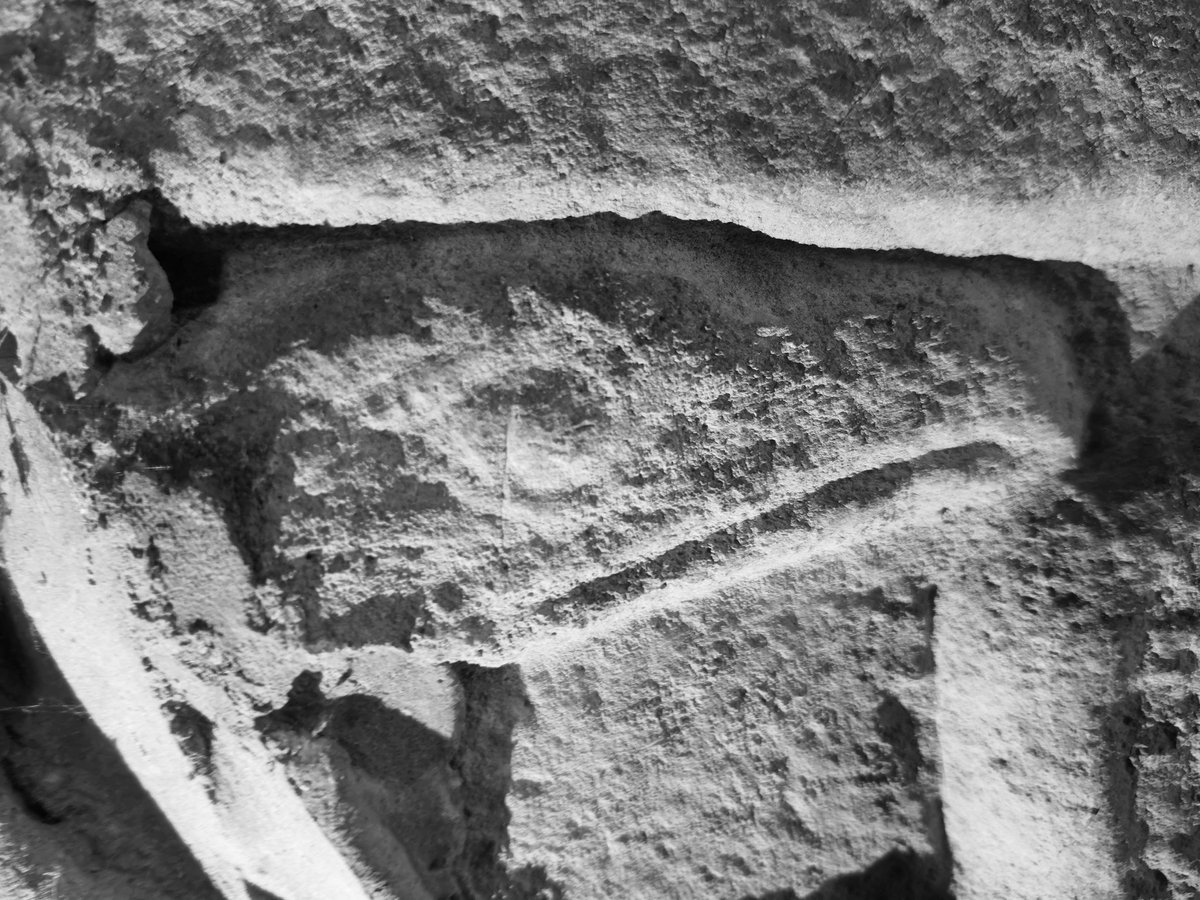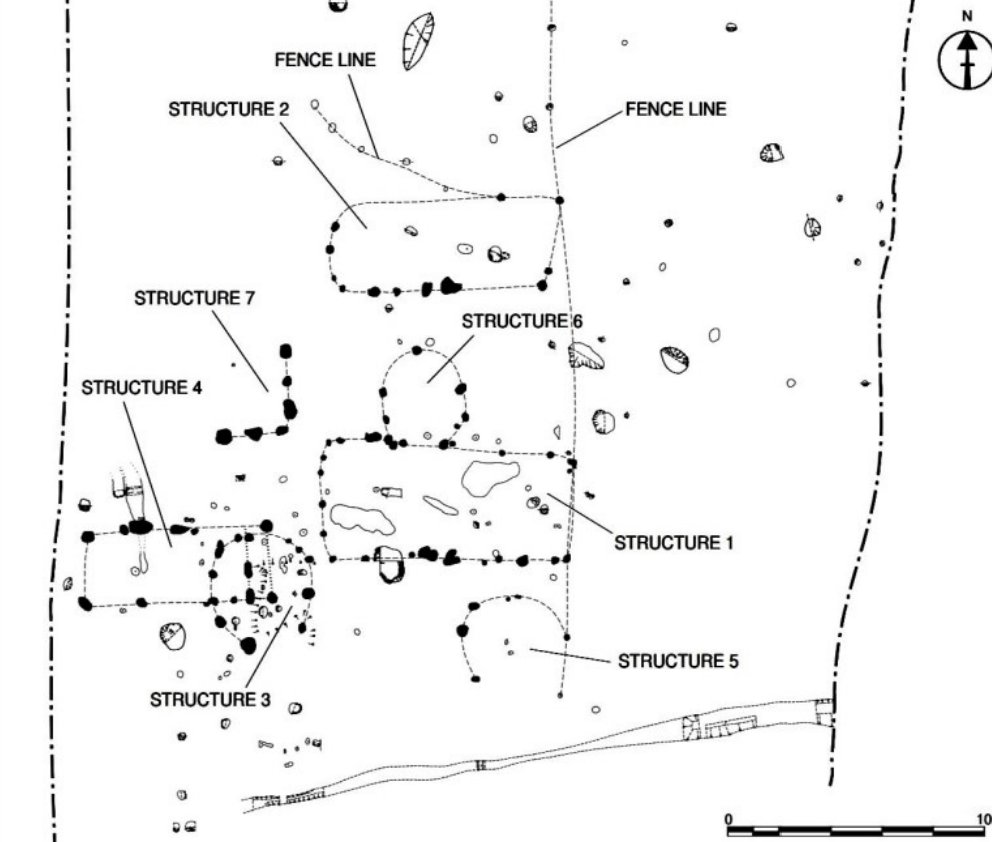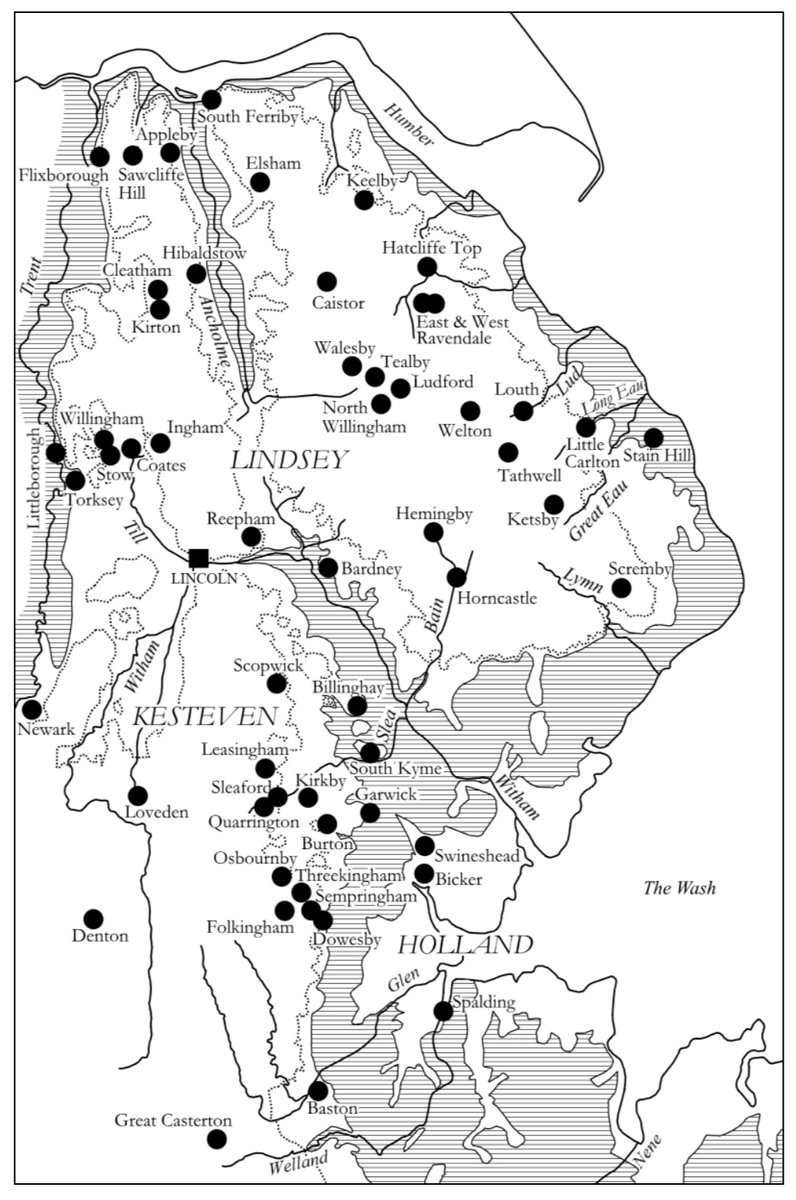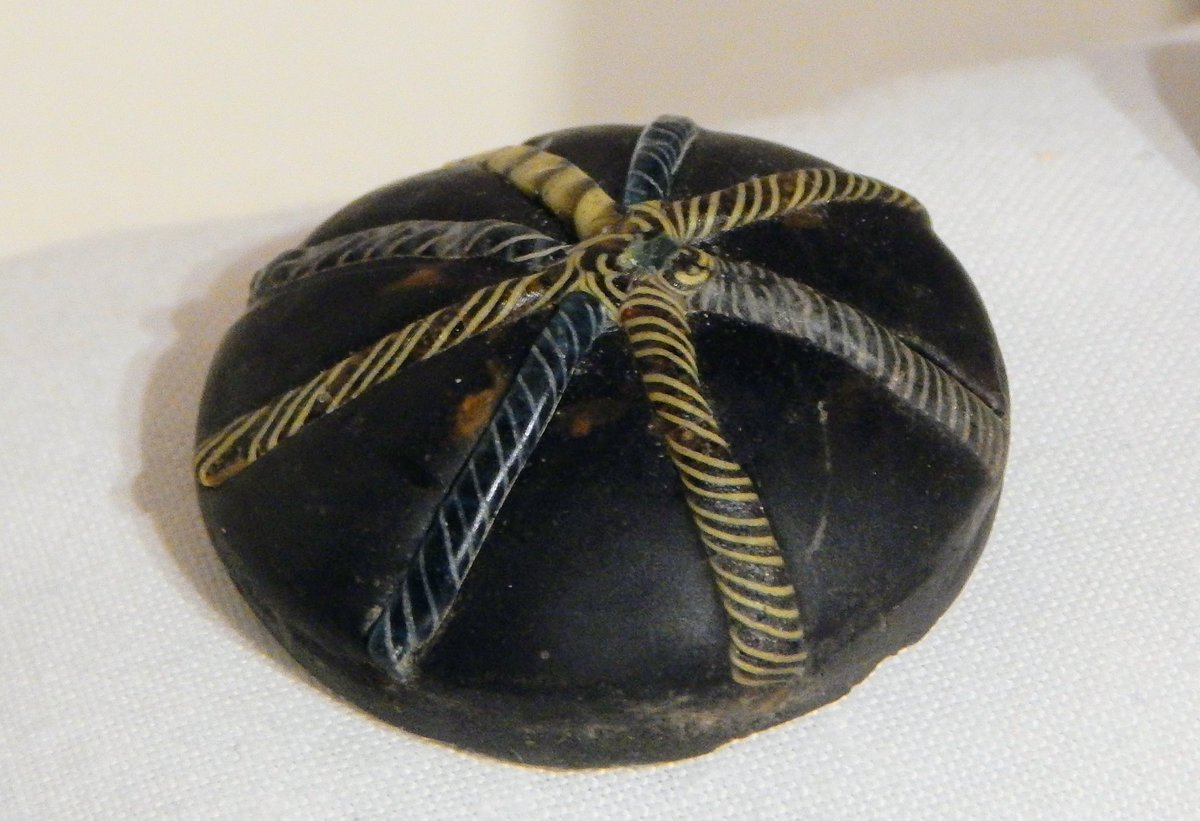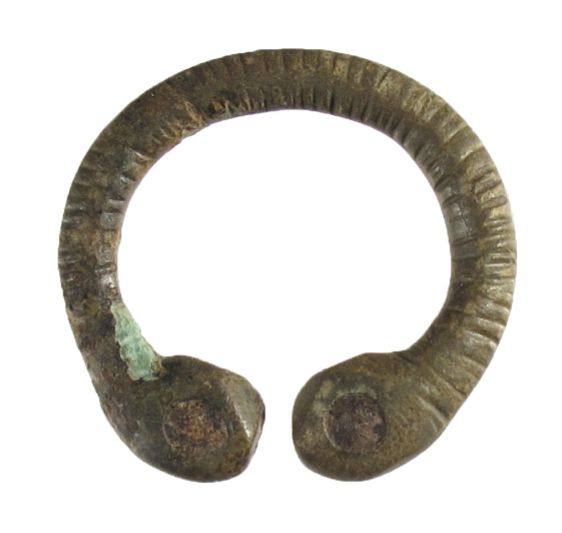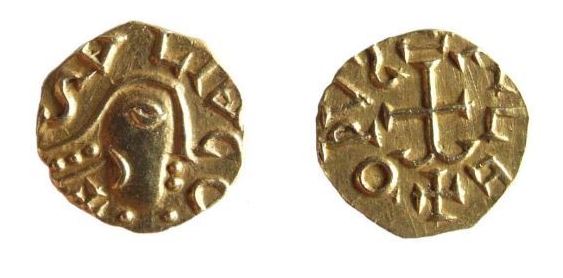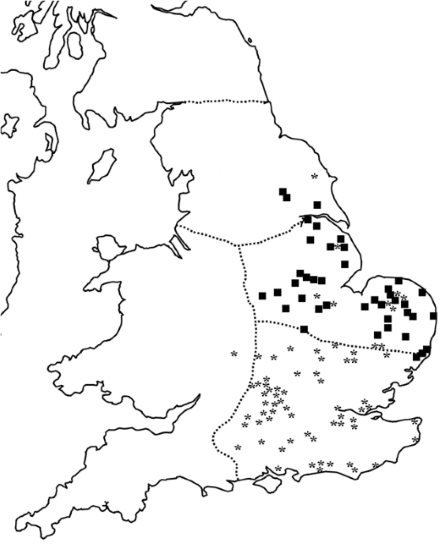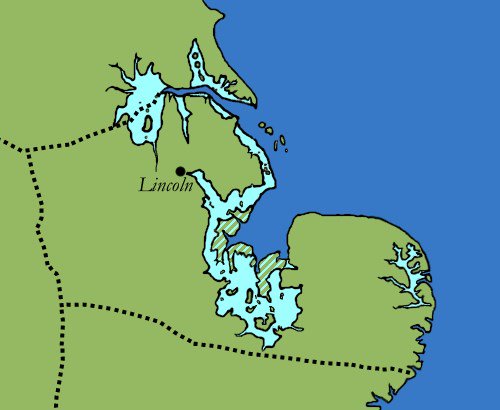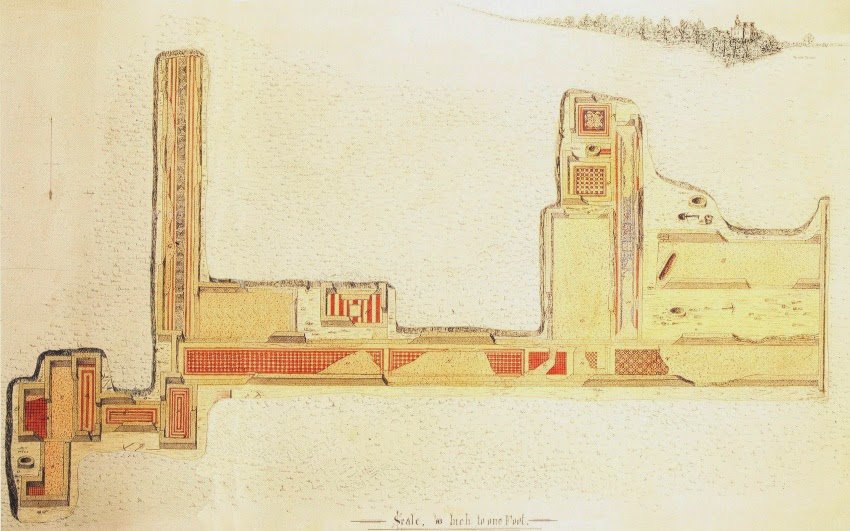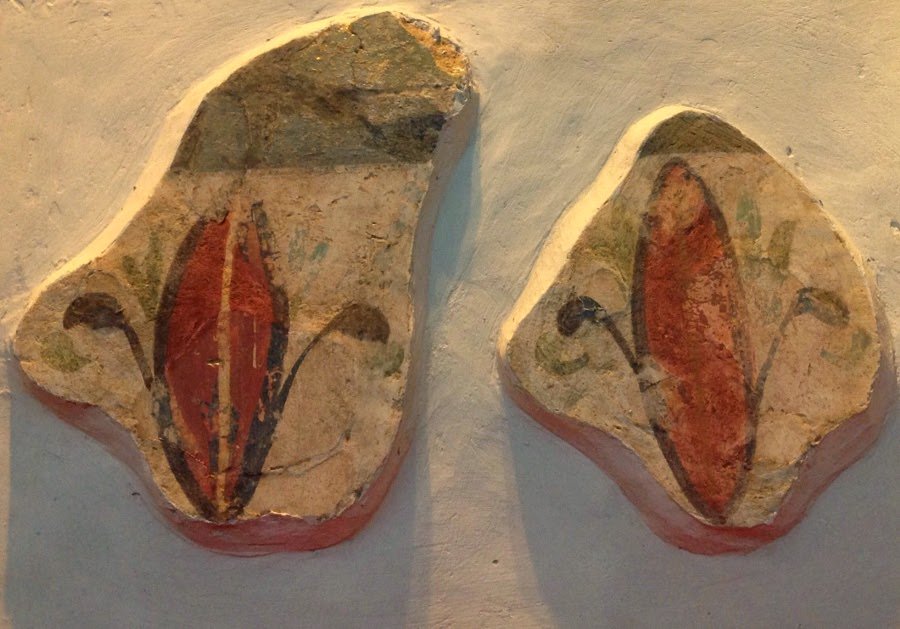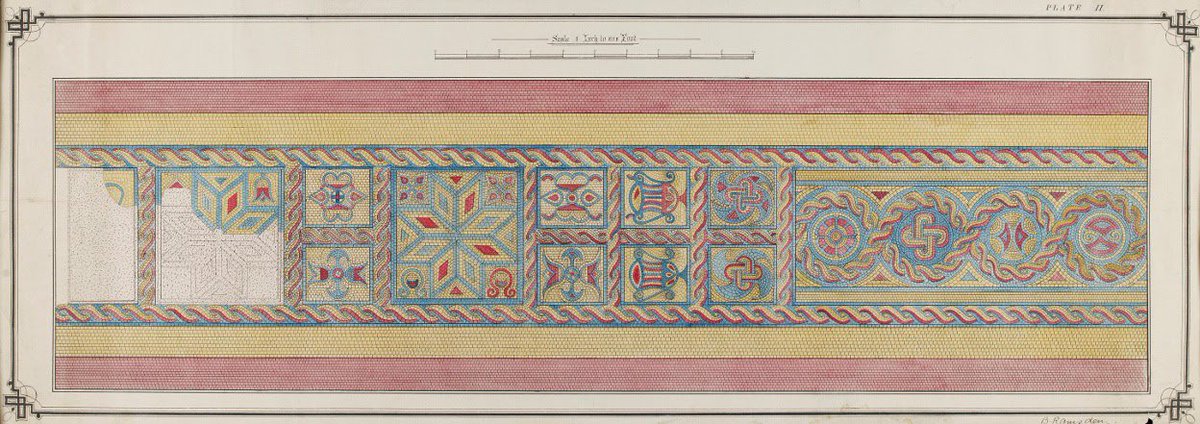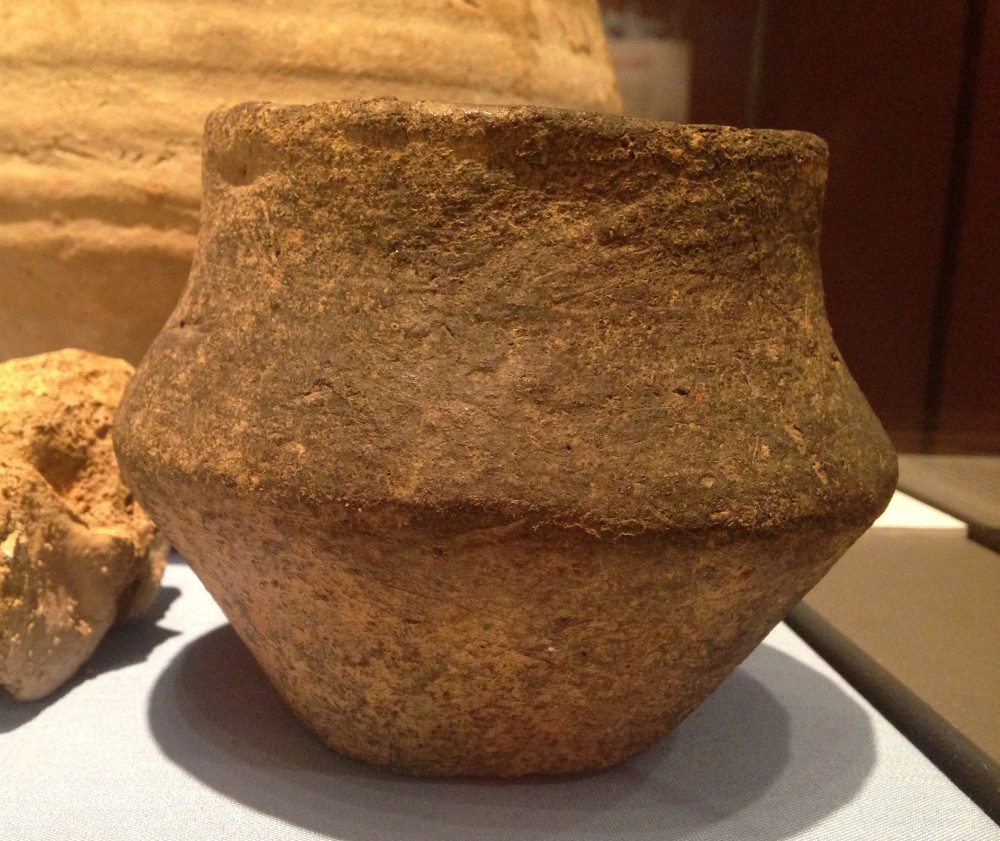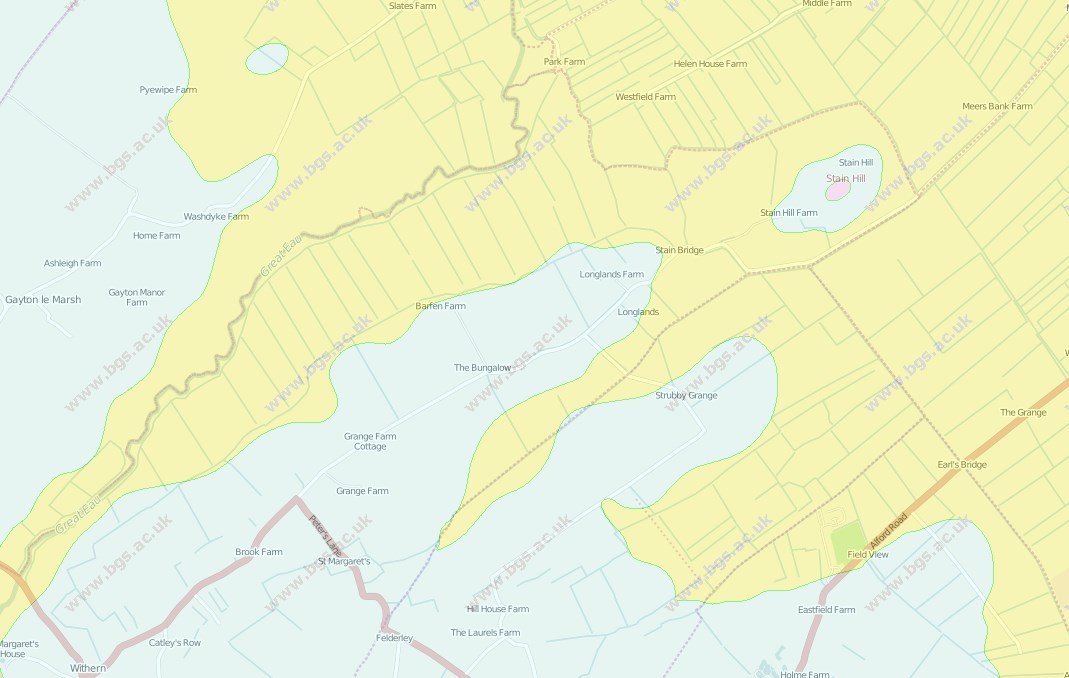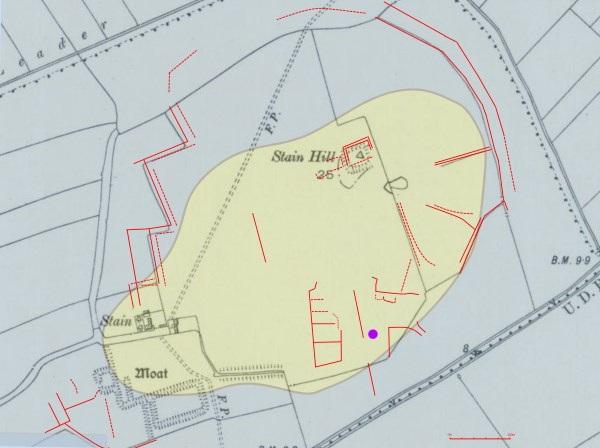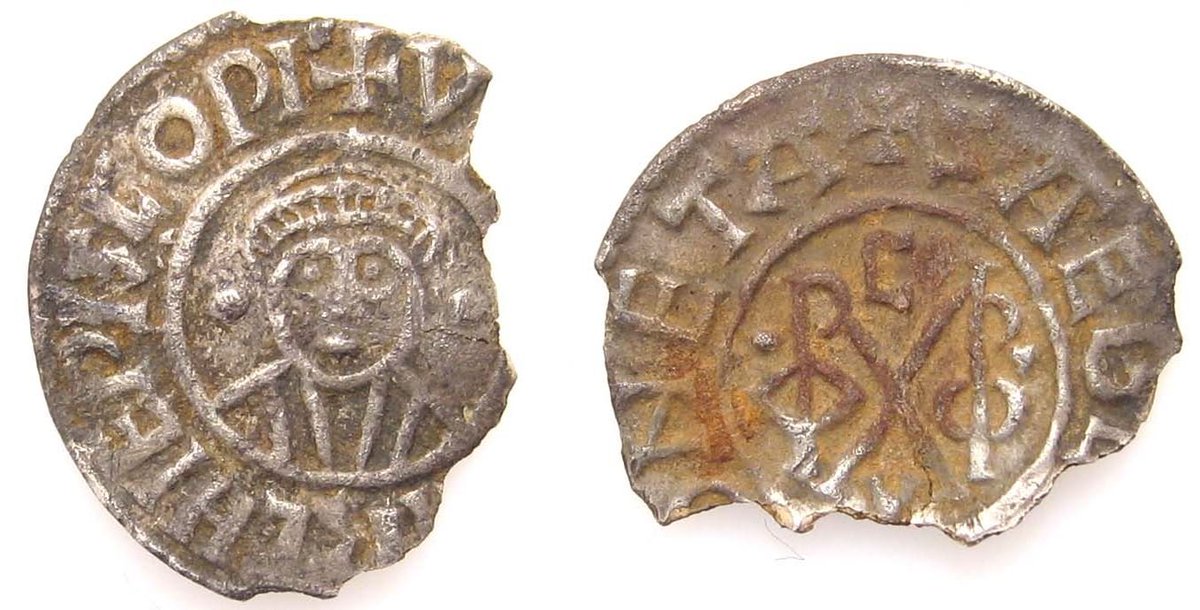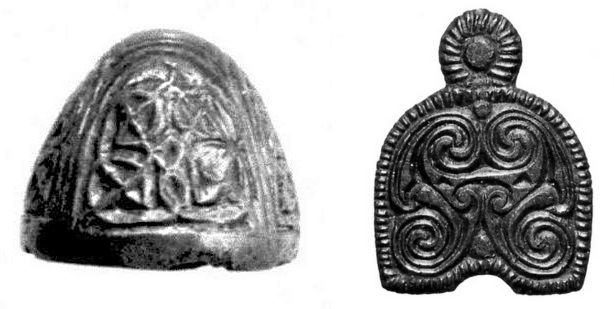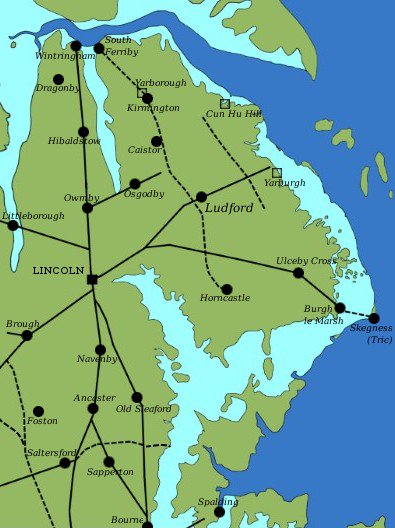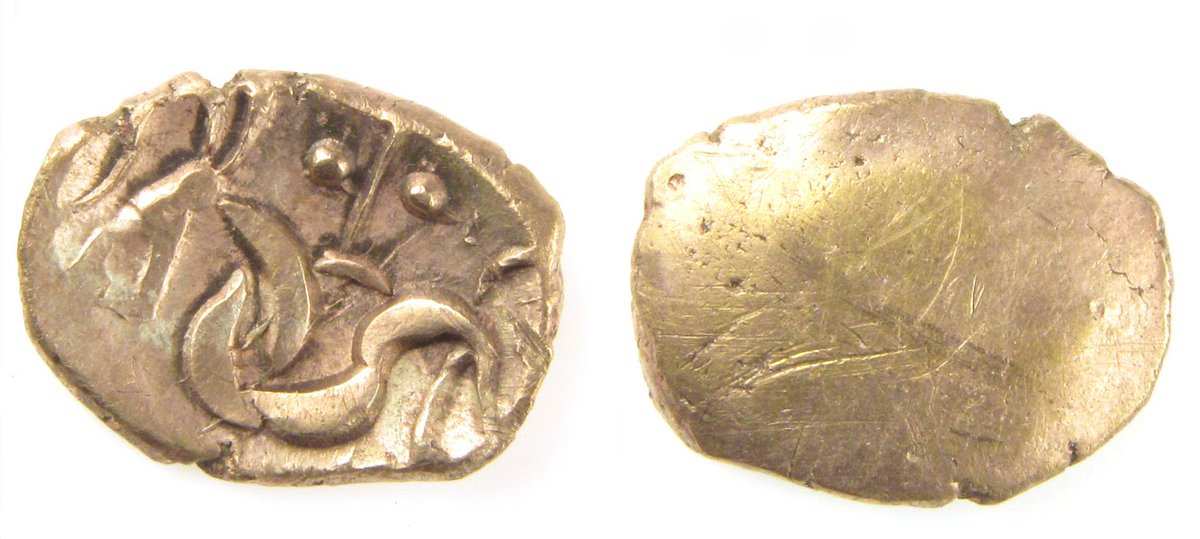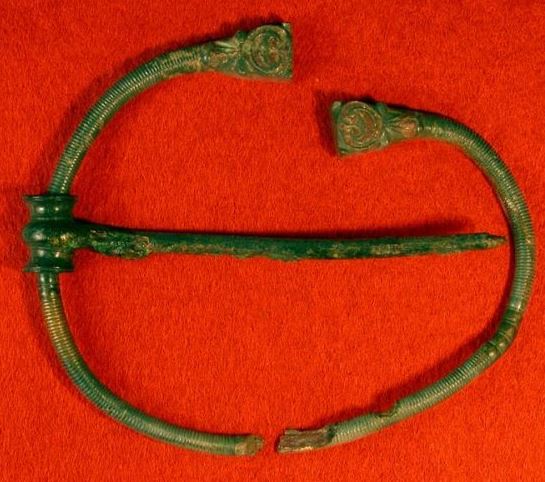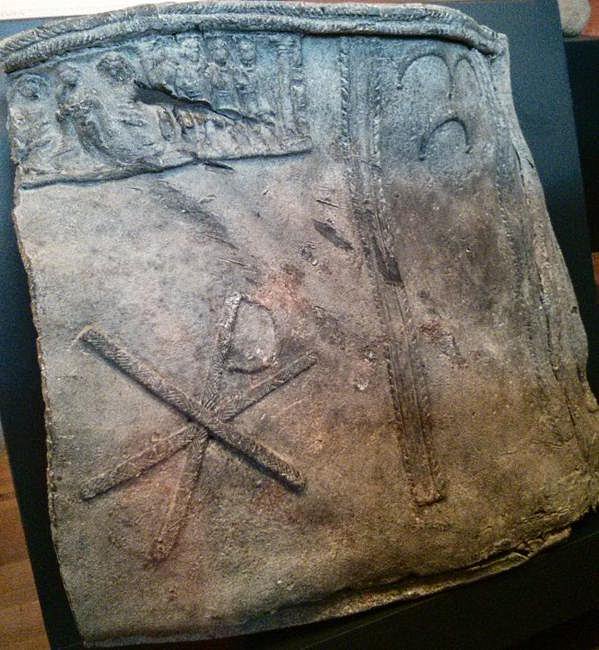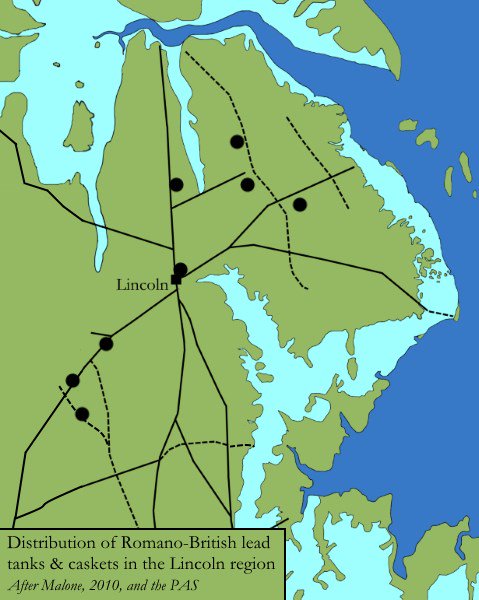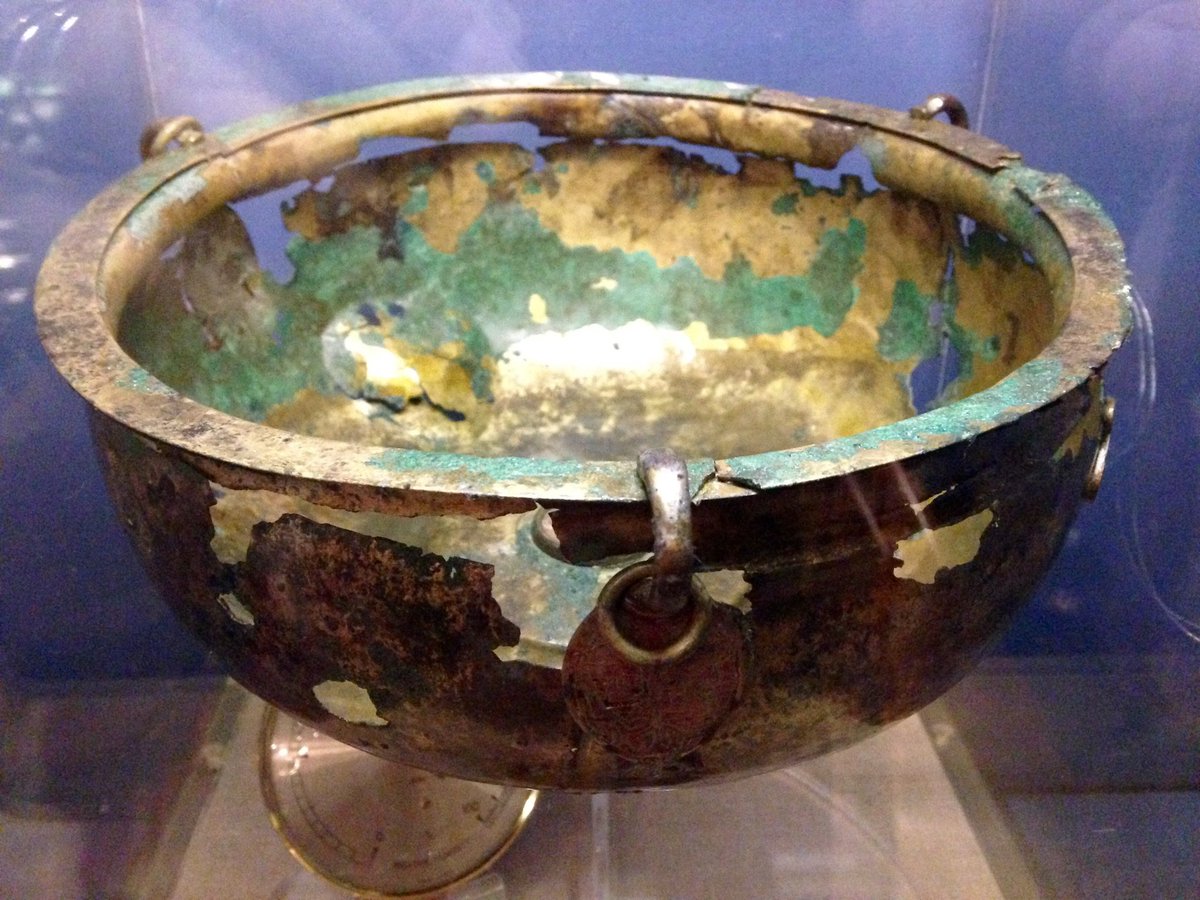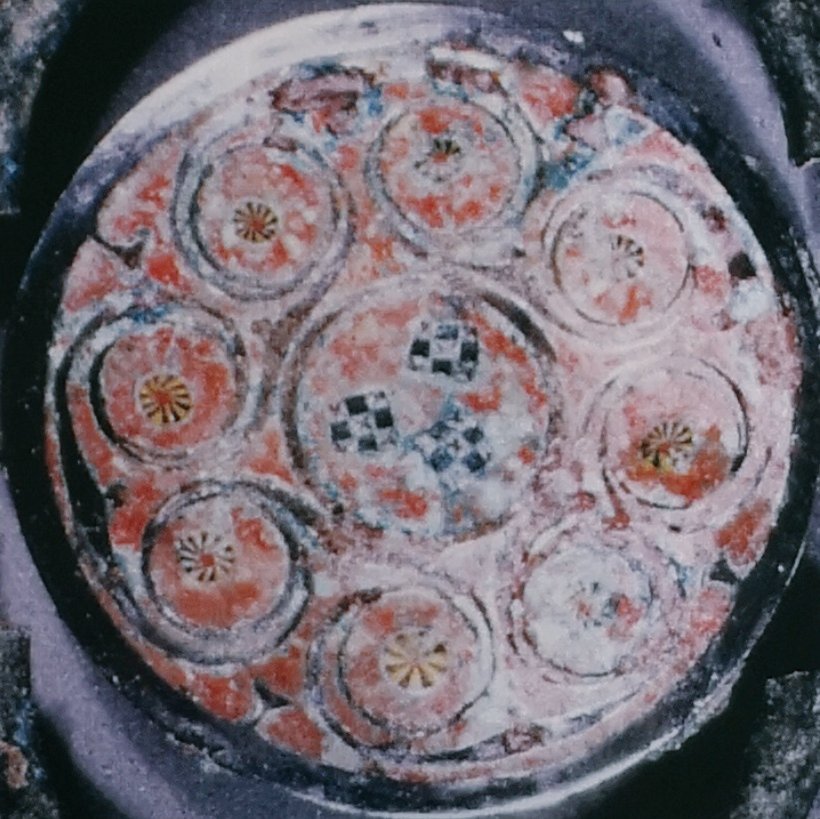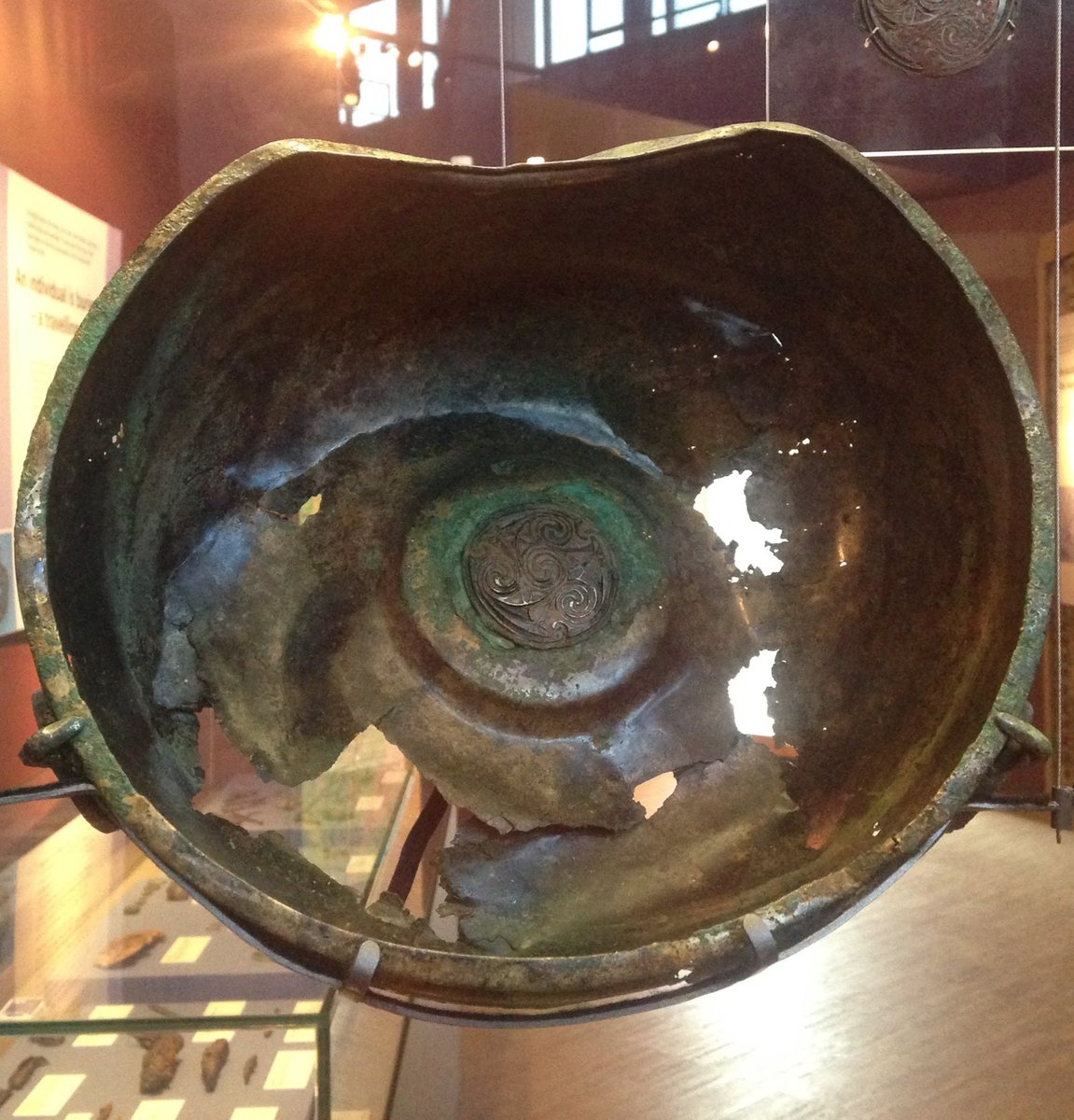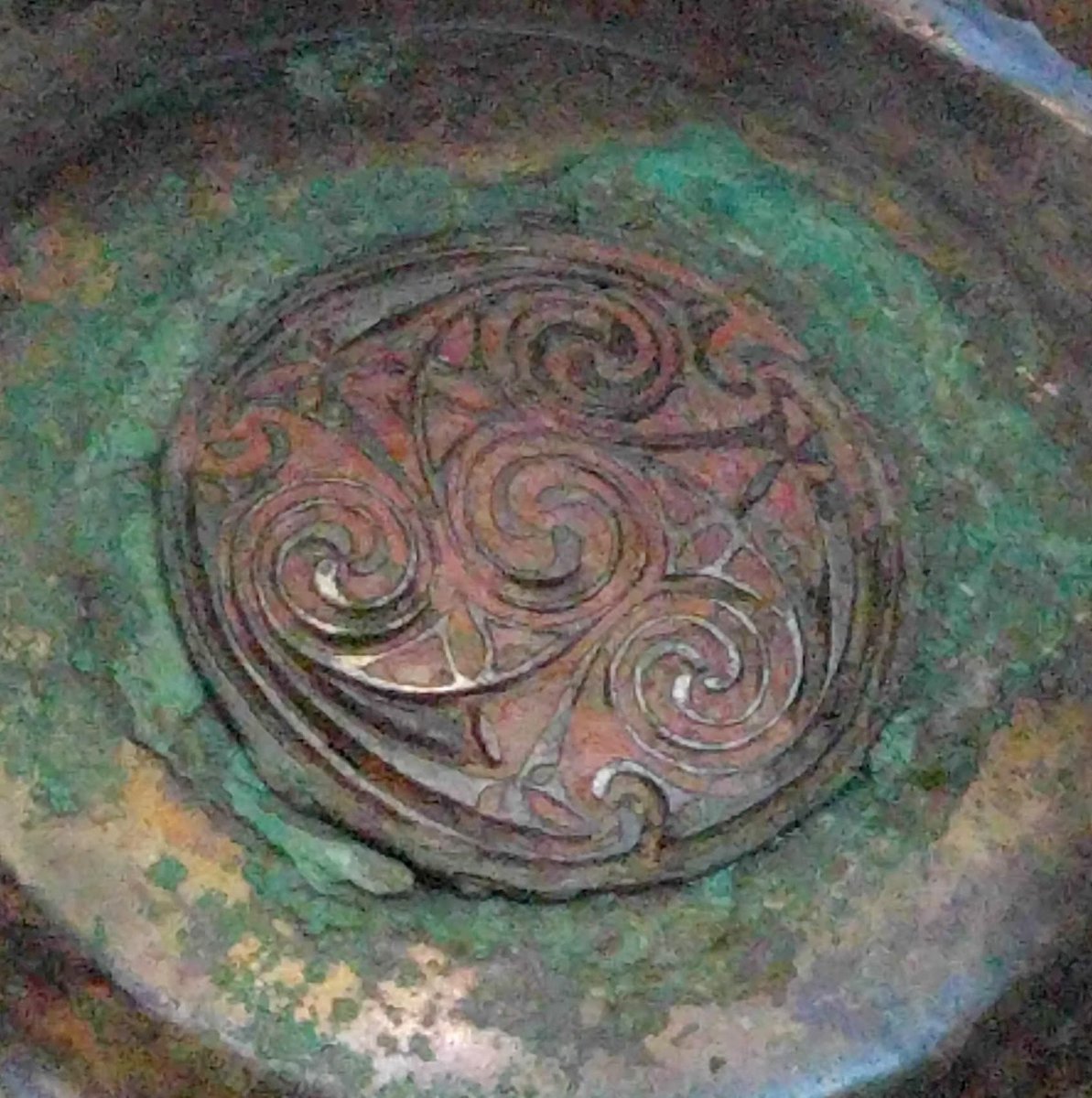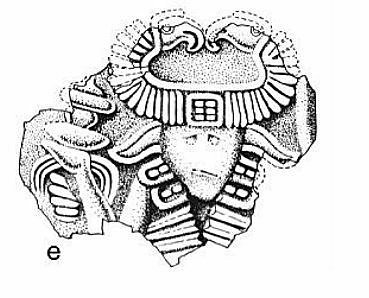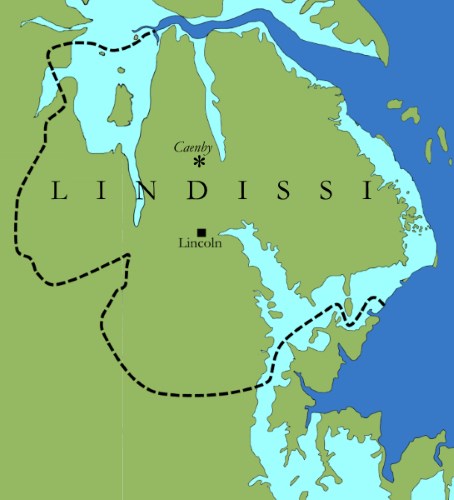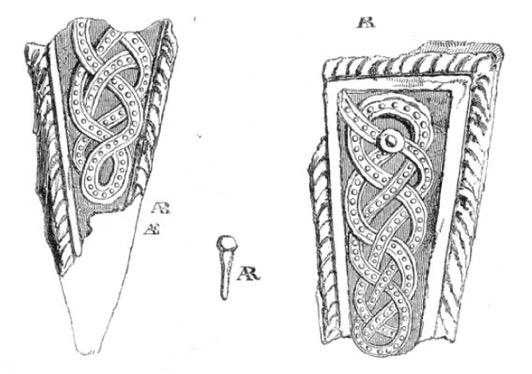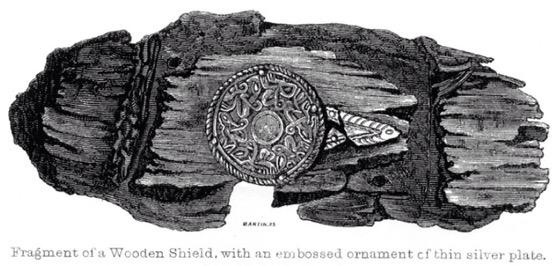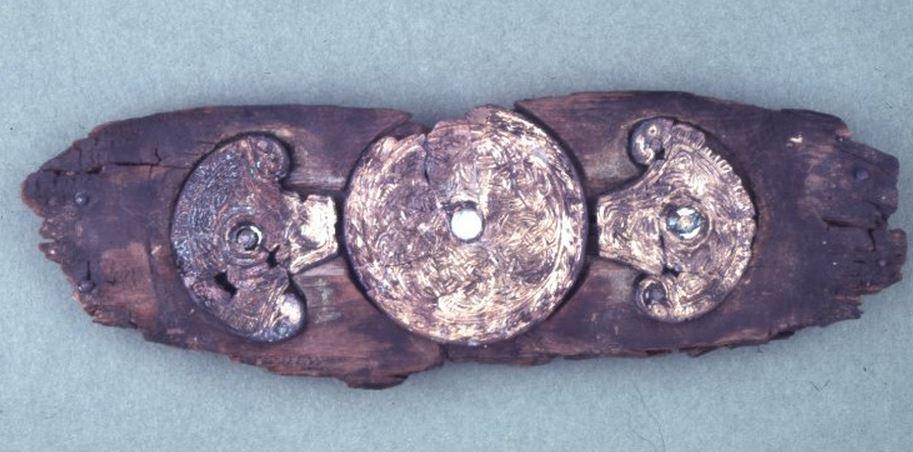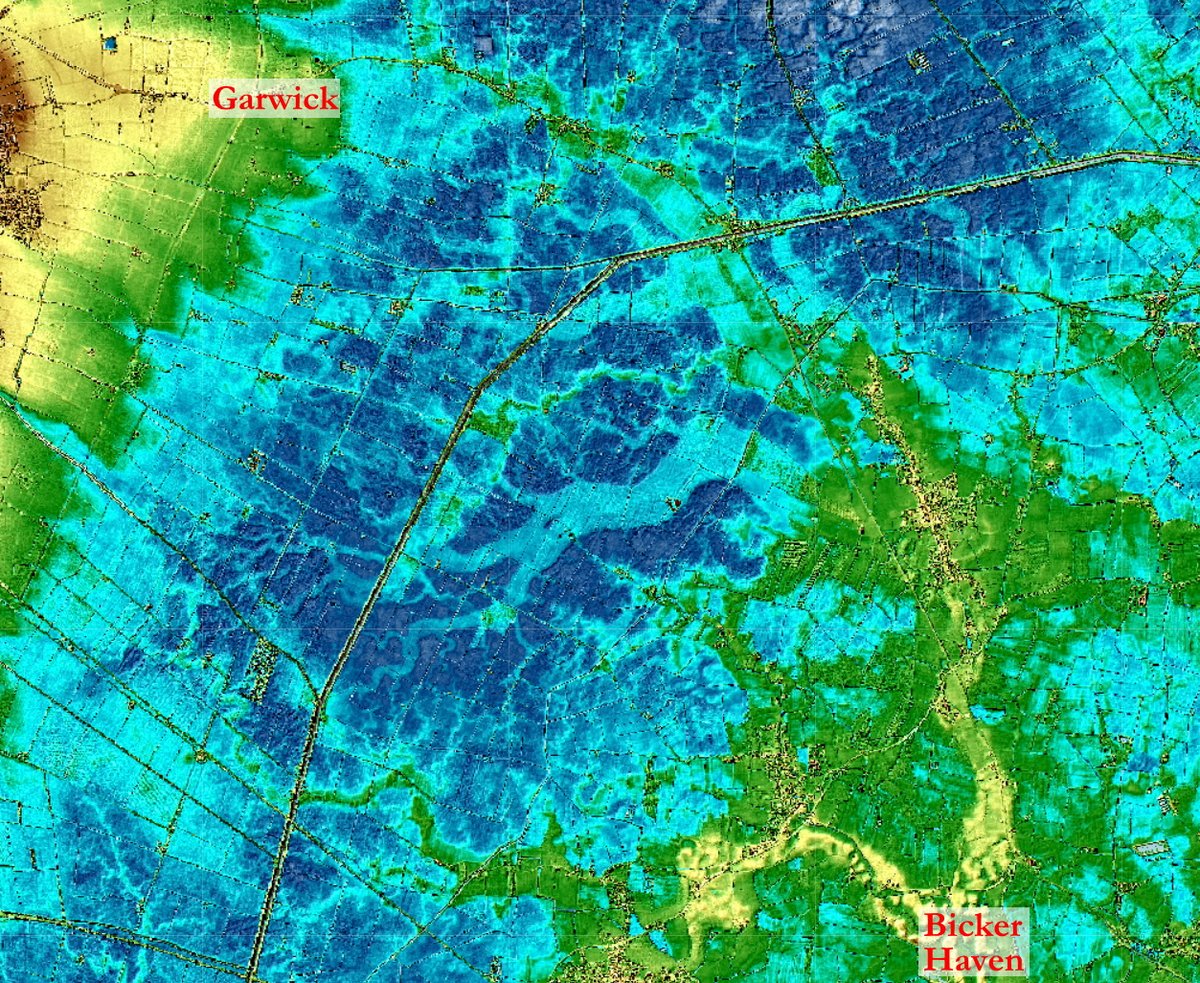I'm pleased to announce that the second edition of my Britons and Anglo-Saxons: Lincolnshire AD 400–650 (2020) has now been published and is available to buy — more details here: https://www.caitlingreen.org/2020/12/britons-and-anglo-saxons-second-edition.html :)
The book offers an interdisciplinary study of the post-Roman 'Lincoln region'. It argues that a British polity named *Lindēs was based at Lincoln into the 6th century, & that the Anglo-Saxon kingdom of Lindsey (Lindissi) had an intimate connection to this British political unit…
One important piece of evidence for this British polity is the 5th-/6th- century church in the centre of the former Roman forum at Lincoln (a 4thC provincial capital) — the evidence is discussed in detail in the book, but there's also a summary here: http://www.caitlingreen.org/2017/12/fifth-to-sixth-century-british-church-lincoln.html :)
Other chapters look at the internal administration of the kingdom of Lindissi, local groups like the Billingas & Spalde of South Lincolnshire, and the territories of the great cremation cemeteries. The final chapter looks at links between Lindisfarne & the Lindisfaran of Lindsey!
So, what's new in the second edition? It includes a brand new, 52-page introduction discussing recent research into the late & post-Roman Lincoln region, consisting of 4 sections. The first section discusses 'Romano-British pottery in the fifth- to sixth-century Lincoln region'…
The second new section is entitled 'Archaeology and the British ‘country of *Lindēs’'. This discusses new finds of post-Roman 'British' metalwork from the Lincoln region, before looking at @Fiona_Gavin's fascinating work on items decorated in the Insular Military Style…
It then goes on to discuss recent finds of 'Anglo-Saxon' metalwork in the Lincoln region, including some important new discoveries of enamelled metalwork from 5th- to 7thC Lincolnshire! Finally, it looks at recent work on cruciform brooches and the great cremation cemeteries.
The third new section is 'Place-names & history in early Anglo-Saxon Lincolnshire'. It considers the place-name evidence for the continental Taifali in Lincolnshire, who probably derive from the L4thC/E5thC Equites Taifali, & the distribution of Late Roman spurs in this context.
This new section then goes on to discuss names like Willingham in Lincolnshire, OE *Wifelingahām, a name that possibly denotes the estate of cultic group under the leadership of a pagan priest… (Pics: map of relevant place-names & a woodland portal in Willingham Woods, Lincs).
Incidentally, worth noting that Stow Minster in Lincolnshire—an 11th-century church arguably on the site of pre-Viking minster—is intriguingly located next to both a Willingham & an Ingham (=possibly an important 7thC royal estate centre)... This is also discussed in the book :)
The fourth new section is concerned with 'Territories, central clusters & persistent places in the pre-Viking Lincolnshire landscape'. It looks at recent work on pre-Viking 'central clusters' & core nodes in the pre-Viking Lincoln region (pic: L8thC/E9thC stonework, South Kyme).
It also looks in more depth at Littleborough, a defended Roman 'small town' on a key crossing-point on the Trent for the Roman road from Lincoln to Doncaster—probably a major 8th-9thC centre & where Paulinus undertook the mass baptism of the people of Lindissi in the 7thC...
Other sites discussed include Bardney, Hatcliffe Top, & the early to Middle Saxon settlement site at Quarrington, with its interesting mix of round & rectangular structures (pics: plan of Quarrington Anglo-Saxon settlement nr Sleaford & map of places mentioned in the new intro).
Finally, it offers a brief update on finds from Garwick & a quick overview of the exciting 7th- to 9th-century 'island' site of Little Carlton, Lincolnshire, which has also produced a British penannular brooch (Images: glass mount & brooch from Little Carlton, latter=LIN-35B2BE)
With regard to the Anglo-Saxon trading site at Garwick, near Sleaford, the book discusses this at length & the new intro notes some new finds and briefly discusses Adam Daubney's work on this important site (pic: a 7thC continental gold tremissis found at this site, LIN-B70DC6).
For more on the Lincoln region in this era, see for example this post written in 2015 :) 'Anglo-Saxon or sub-Roman: what should we call Lincolnshire in the fifth and sixth centuries?' — https://caitlingreen.org/2015/01/lincolnshire-anglo-saxon-or-sub-roman.html?m=1
Also of interest may be this on the Greetwell villa-palace—the probable residence of the Late Roman provincial governor, seems to have been maintained into E5thC w/ immense corridors & mosaics, & has indications of post-Roman activity & estate continuity: https://www.caitlingreen.org/2015/02/roman-mosaics-from-lincolnshire.html
This interesting pot comes from the Greetwell villa-palace (which is actually at Greetwell Fields, just to the east of Lincoln), and gets a brief mention in the new introduction :) 'An early Anglo-Saxon pot from the Greetwell villa-palace' - https://www.caitlingreen.org/2015/04/an-early-anglo-saxon-pot-from-greetwell.html
Stain Hill & Ketsby also get brief mentions in the new intro to the second edition, both of which were DMVs/shrunken settlements that saw Late Roman, early Anglo-Saxon, Middle Saxon & Anglo-Scandinavian activity. Stain Hill was an 'island' in the Outmarsh: https://www.caitlingreen.org/2014/11/stain-hill-anglo-saxon-marsh.html
An eighth-century silver-gilt mount and seventh-century 'Irish' pressblech die from Ketsby Deserted Medieval Village, a first- to sixteenth-century settlement in the Lincolnshire Wolds: https://www.caitlingreen.org/2015/02/ketsby-dmv.html
Ludford, Tealby & the Taifali also have a section in the new introduction—see here for a little more detail: http://www.caitlingreen.org/2016/10/ludford-tealby-and-the-taifali.html :)
An enamelled post-Roman British Class 1 penannular brooch found at East Ravendale, Lincolnshire: https://caitlingreen.org/2015/01/lincolnshire-anglo-saxon-or-sub-roman.html?m=1
The book also has a brief discussion of Late Roman lead tanks/fonts, like this from Walesby—the late & post-Roman churches in Lincoln's forum may have been associated with the 4thC Bishop of Lincoln, whose area of influence may also be visible in the distribution of these items…
A 'Late Celtic' hanging bowl recovered from one of the post-church graves at the 5th- to 6th-century British church site of St Paul-in-the-Bail, Lincoln :)
The 7th-century Ingham hanging bowl from Lincolnshire in @collectionusher. 'Ingham' is a *very* interesting name and is discussed in the new intro to the second edition—perhaps ‘the
estate of the Inguione’, a tag to mark places as the royal property of an early Anglian king…
estate of the Inguione’, a tag to mark places as the royal property of an early Anglian king…
Note, Ingham is also 3 miles from the early 7th-century Anglo-Saxon 'princely' burial at Caenby, Lincolnshire—the mound was bigger than Sutton Hoo and is said to have featured a seated burial! Sadly the mound was excavated in the 19th century and the finds are now fragmentary.
The excavation report from 1850 of the Anglo-Saxon burial mound at Caenby, Lincolnshire: http://archaeologydataservice.ac.uk/archiveDS/archiveDownload?t=arch-1132-1/dissemination/pdf/007/007_036_044.pdf (photo: https://www.britishmuseum.org/collection/object/H_1851-1011-1).
The new intro also briefly discusses Steve Malone's work on the Lidar mapping of the Fenland—in particular, his feature L14 that may well represent an extinct early medieval major marine channel that connected the Middle Saxon trading site at Garwick to the sea at Bicker Haven...
The A17 road that runs through Garwick sits atop this extinct channel (roddon); note, the Old English name Swineshead for the next parish means ‘the head of the creek’ & C14 dating from the A17 there indicates marine conditions present from the Late Roman/early post-Roman period.

 Read on Twitter
Read on Twitter